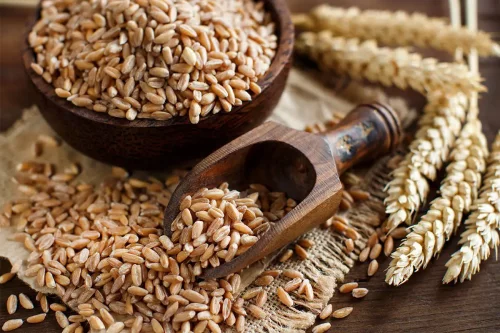Spelt flour in recent years has become an increasingly popular food on the market, mainly due to its qualities and particularly intense taste. Today we accompany you to discover its origins and main characteristics.
A cereal with a very ancient history
Spelt, a herbaceous plant of the Gramineae family, has been used and appreciated since ancient times, so much so that it is referred to as the first cultivated and “domesticated” grain species. Popular among the Romans, who used it to make flatbreads and polenta, it is the grain that gives its name to flour.
Spelt is particularly resistant to cold and can be grown even in very poor soils, which is why in ancient times it achieved great success and spread rapidly. The later arrival of wheat, with its much higher yield, however, slowly supplanted it. Despite this in recent years it is powerfully returning to our tables, facilitated by the “fashion” of ancient grains and especially by the characteristics of the different variants, which do not need special treatments and are therefore very natural products.
In general, we can identify three species of spelt: Triticum monococcum (small spelt), Triticum dicoccum (the spelt proper), and Triticum spelta (major spelt). Although they are all suitable for milling, in our mill we make flour from only the last two varieties, which provide greater versatility.
Spelt is particularly resistant to cold and can be grown even in very poor soils, which is why in ancient times it achieved great success and spread rapidly. The later arrival of wheat, with its much higher yield, however, slowly supplanted it. Despite this in recent years it is powerfully returning to our tables, facilitated by the “fashion” of ancient grains and especially by the characteristics of the different variants, which do not need special treatments and are therefore very natural products.
In general, we can identify three species of spelt: Triticum monococcum (small spelt), Triticum dicoccum (the spelt proper), and Triticum spelta (major spelt). Although they are all suitable for milling, in our mill we make flour from only the last two varieties, which provide greater versatility.
The grinding process
To obtain spelt flour, unlike most cereals, it is necessary to subject the grains to a hulling process before milling can take place. In fact, the natural conformation of the grain does not allow the outer part of the bran to be separated during the traditional threshing and sorting stages. Therefore, at least one pass through a hulling machine is necessary. Our husking plant, for example, is exclusively dedicated to organic grains and allows us to obtain quality flours, rich in fiber and protein.
The nutritional characteristics
Spelt flour is very similar to wheat flour, both in composition and taste, although it is more digestible and satiating and has a more intense flavor. These characteristics are due to the presence of a lot of fiber and the right amount of carbohydrates, protein, minerals, and B vitamins.
Its low caloric intake, combined with its remarkable ability to absorb water, makes spelt flour the ideal product for making fresh pasta, bread and cakes, especially for those who want to keep fit or have difficulty digesting wheat-based products. Spelt flour also contains gluten, albeit in low percentages, so it is not suitable for celiacs
Its low caloric intake, combined with its remarkable ability to absorb water, makes spelt flour the ideal product for making fresh pasta, bread and cakes, especially for those who want to keep fit or have difficulty digesting wheat-based products. Spelt flour also contains gluten, albeit in low percentages, so it is not suitable for celiacs
